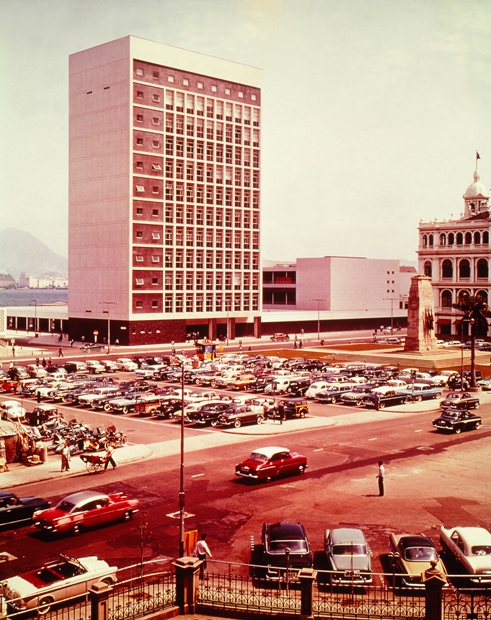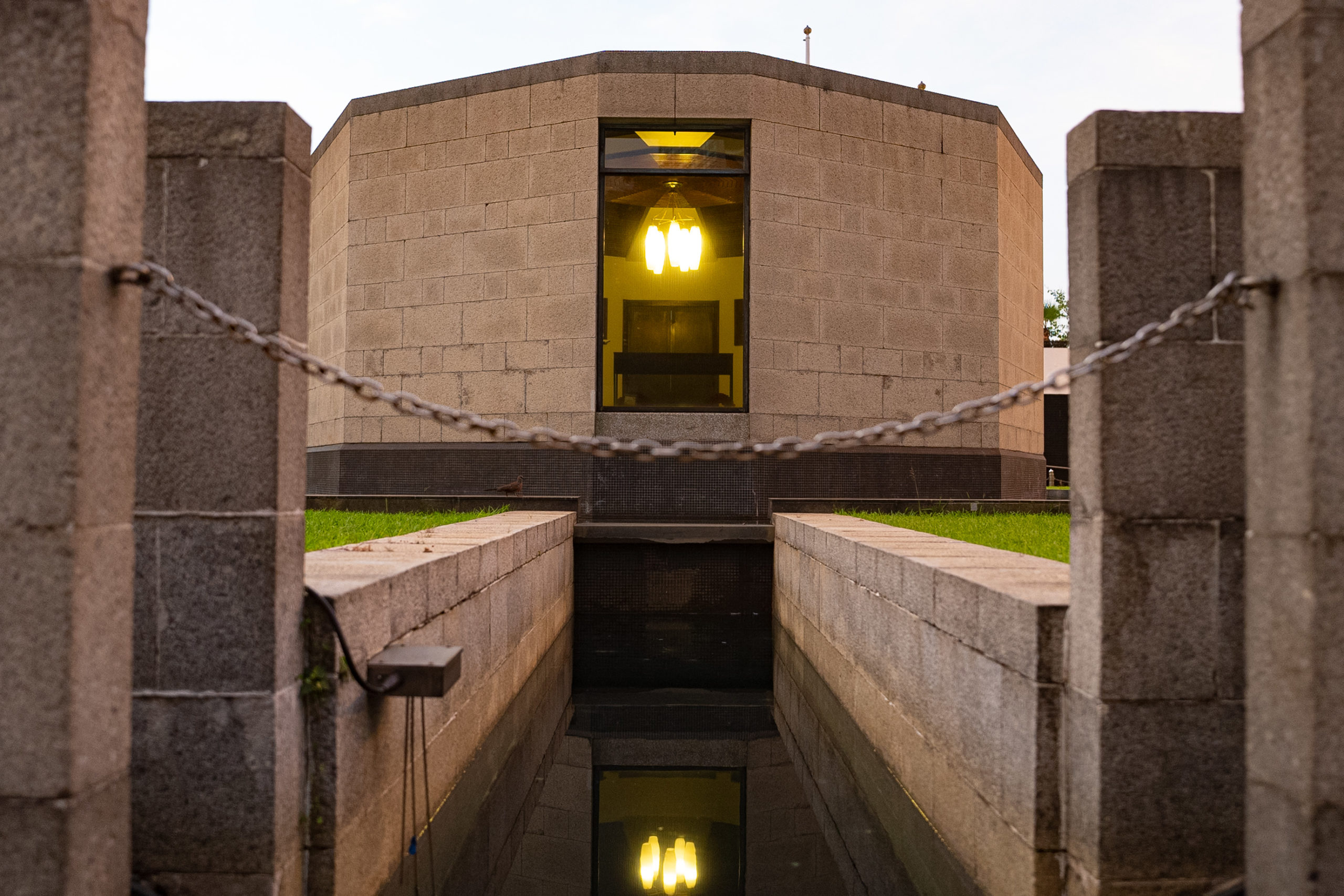Opened in 1962 by Sir Robert Black, Hong Kong City Hall serves as the venue for civic and cultural events. Despite its straightforward Bauhaus architectural style, it was listed as a Grade I Historic Building in 2009, owing to its historical value. The building is among the few that survived the Central and Wan Chai Reclamation Project.

The City Hall has hosted prominent guests prior to Hong Kong's 1997 handover. British Royal members, including Queen Elizabeth II and the late Duke of Edinburgh, Prince Philip, visited the City Hall during their 1975 visit. The 24th through 28th governors of Hong Kong took their oaths here. The building was also the Urban Council Chamber until 1999, the site where each Legal Year commenced, and a polling station for Legislative Council and Urban Council elections during the colonial period.
The City Hall is rather familiar to most Hong Kongers for the Marriage Registry and the first public library located in the high block. Now a cultural centre, it provides fine performance venues for splendid shows of all kinds by excellent performers, from the Chor Fung Ming Cantonese Opera Troupe (雛鳳鳴劇團) to renowned musician Yo-Yo Ma (馬友友). Providing citizens with quality cultural activities, this is the indispensable place that marks history of the city as well as of one's own.

WWII Memorial Garden
The Memorial garden, among other places of historical-political significance, is a hidden gem visitors might have missed while they walk into the city hall blocks. It is where the fallen soldiers and citizens, who were in defense of Hong Kong during WWII, are remembered. A twelve-sided Memorial Shrine stands in the center of the garden situated between the high block and low block of the city hall. Inscribed on the walls are the words「英靈不滅、浩氣長存」(in English: These had seen movement and heard music: known slumber and waking; loved; done proudly friended) denoting the commemoration of the unending spirit of the Brave and the Dead. The names of the veterans are listed on the Roll of Honour and the names of units are engraved onto the plaques. You could feel the strong sense of patriotic duty of the fallen to fight for their beloved homeland.


Post-handover, the City Hall and the Memorial Shrine have seen a few changes. A new plaque was added to the shrine to commemorate the East River Column (東江縱隊), a group of communist guerrillas based in Sai Kung. Additionally, the day of Hong Kong's Liberation was changed post-handover from August 15, the global Victory over Japan (VJ) Day, to September 3, the day Japan surrendered to China. This modification aligns with the Central People's government calendar, marking another influence of China on Hong Kong after the handover.
Visiting the Memorial Garden, particularly the Memorial Shrine, invites contemplation on the dramatic shifts in the meaning of "patriotism" from wartime to the present protests. It's a poignant reminder of the human propensity for both good and evil, making it a place well worth visiting.









